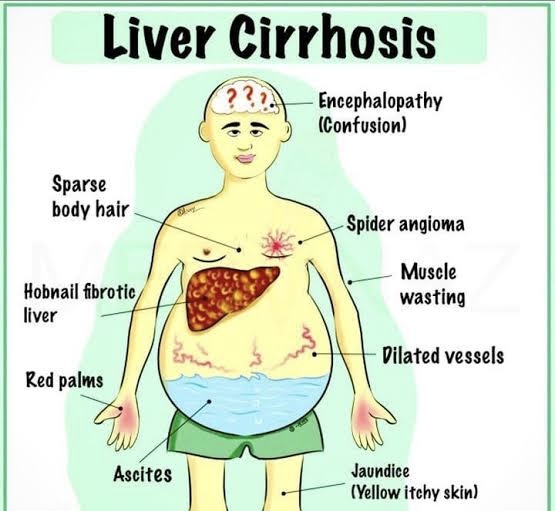Cirrhosis is a late stage of scarring (fibrosis) of the liver caused by many forms of liver diseases and conditions, such as hepatitis and chronic alcoholism. The liver performs a vital role in detoxification, metabolism, and production of biochemically important molecules. When the liver is damaged, it can lead to serious health problems.
Causes of Cirrhosis
Cirrhosis can be caused by various factors, including:
– Chronic alcohol consumption: Long-term excessive alcohol intake can lead to liver damage and cirrhosis.
– Hepatitis: Chronic hepatitis B and C infections can cause liver inflammation and scarring.
– Non-alcoholic fatty liver disease (NAFLD): A condition characterized by excess fat in the liver, which can progress to cirrhosis.
– Autoimmune hepatitis: A condition where the immune system attacks liver cells, leading to inflammation and scarring.
– Genetic disorders: Certain genetic conditions, such as hemochromatosis and Wilson’s disease, can cause liver damage and cirrhosis.
Symptoms of Cirrhosis
Symptoms of cirrhosis can vary depending on the stage and severity of the condition. Common symptoms include:
– Fatigue: Feeling weak and tired
– Loss of appetite: Decreased interest in food
– Nausea and vomiting: Feeling queasy and vomiting
– Abdominal pain: Pain in the upper right side of the abdomen
– Jaundice: Yellowing of the skin and eyes
– Swelling: Fluid buildup in the legs, ankles, and feet
Complications of Cirrhosis
Cirrhosis can lead to serious complications, including:
– Liver failure: The liver stops functioning properly, leading to a buildup of toxins in the body.
– Portal hypertension: Increased pressure in the portal vein, which can cause bleeding in the esophagus and stomach.
– Hepatic encephalopathy: A condition characterized by confusion, disorientation, and coma due to liver dysfunction.
– Liver cancer: Cirrhosis increases the risk of developing liver cancer.
Diagnosis and Treatment
Diagnosis of cirrhosis typically involves:
– Physical examination: A doctor will perform a physical exam to look for signs of liver disease.
– Imaging tests: Tests such as ultrasound, CT, or MRI scans can help identify liver damage.
– Liver biopsy: A sample of liver tissue is taken to assess the extent of liver damage.
Treatment for cirrhosis depends on the underlying cause and may include:
– Lifestyle changes: Avoiding alcohol, maintaining a healthy weight, and following a balanced diet.
– Medications: Medications may be prescribed to manage symptoms and slow disease progression.
– Liver transplant: In severe cases, a liver transplant may be necessary.
Prevention
Preventing cirrhosis involves:
– Limiting alcohol consumption: Avoiding excessive alcohol intake can reduce the risk of liver damage.
– Vaccination: Getting vaccinated against hepatitis A and B can prevent these infections.
– Maintaining a healthy weight: Avoiding obesity and maintaining a healthy weight can reduce the risk of NAFLD.
– Avoiding toxins: Avoiding exposure to toxins and chemicals can reduce the risk of liver damage.

